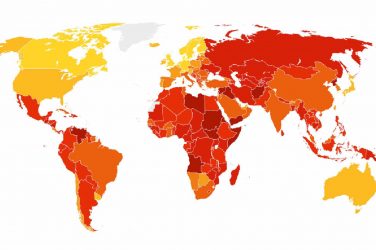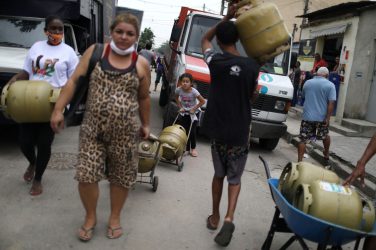 Brazil’s unemployment rate rose to 11.6% in the three months through July, the Brazilian statistics agency IBGE said on Tuesday. Brazil’s jobless rate has risen sharply from 6.5% at the end of 2014 as the country entered its worst recession in decades.
Brazil’s unemployment rate rose to 11.6% in the three months through July, the Brazilian statistics agency IBGE said on Tuesday. Brazil’s jobless rate has risen sharply from 6.5% at the end of 2014 as the country entered its worst recession in decades.
More than 1.7 million Brazilians have lost their jobs over the last 12 months, according to Labor Ministry data, taking the total unemployed population to an estimated 11.8 million.
Wages discounted for inflation fell 3.0% from the same months in 2015 to an average of 1,985.00 reais (US$ 615.08).
The fall from grace of what was considered a vibrant emerging market until a few years ago cost Brazil its investment grade rating and contributed to destabilizing President Dilma Rousseff’s government.

The suspended president was removed from office by the Senate on charges of doctoring budget numbers.
GDP Down
Brazil’s Gross Domestic Product (GDP) closed out the second quarter of 2016 0.6% down from the previous quarter in the seasonally adjusted series, totaling US$ 461.18 billion.
Compared to the second quarter of 2015, the GDP shrank 3.8%. With the latest result, the cumulative GDP in the first six months of the year was down 4.6% as against the first six months of 2015.
The cumulative result for the four-quarter period ending in the second quarter of 2016 was down 4.9% from the comparable period a year before.
The Quarterly National Accounts survey was published by the Brazilian Institute of Geography and Statistics (IBGE).
Growth Forecast
The signs of economic recovery led the Brazilian government to increase the growth forecast for next year. Brazil’s GDP growth estimates increased from 1.2% to 1.6% for 2017, announced Finance Ministry Secretary for Economic Policies, Carlos Hamilton Araújo.
The official inflation forecast by the Broad National Consumer Price Index (IPCA) was kept at 4.8%. The numbers will be used to prepare the 2017 Annual Budget just submitted to Congress.
According to the secretary, the government will only release the effect of the increased economic growth on federal revenues when the bill is sent. If revenues rise more than expected, the government will not have to increase taxes to raise next year’s funds and meet the primary deficit target of US$ 43 billion in 2017.
According to Araújo, the country should report economic growth again in this year’s fourth quarter.
“In real terms, the industrial production has been increasing for four consecutive months. The Monthly Survey of Trade done by the Brazilian Institute of Geography and Statistics showed signs of steadying in trade, growing 0.1% in June. We have indications that the second half will report better performances than the first. In our baseline scenario, we expect GDP to grow in the fourth quarter compared with the third,” reported the secretary.
For 2016, the Secretariat for Economic Policies reduced the GDP contraction forecast from 3.1% to 3%. The IPCA projection was kept at 7.2%.
The economic staff’s estimates are more optimistic than the market’s. According to Focus Market Readout, weekly updated based on estimates from financial institutions published by the Central Bank, the country should end 2016 with GDP dropping 3.2% and an inflation of 7.31%.
For 2017, market analysts predict a 1.1% growth in GDP and 5.14%, in IPCA.
Interest Rates Unchanged
Brazil’s central bank kept interest rates at a decade high for the ninth straight time on Wednesday, but did not discard a cut rate later this year if stubbornly high inflation subsides. In a unanimous vote, the bank’s monetary policy committee, Copom, kept its benchmark Selic rate at 14.25%, its highest since July 2006.
In the usual release the central bank removed from its statement a previous reference to the lack of room to cut interest rates, but laid out the blueprint to lower borrowing costs.
“The committee judges that a loosening of monetary conditions will depend on factors that allow greater confidence on meeting the inflation targets at the relevant horizons,” the bank said.
The bank highlighted a reduction in uncertainties regarding the approval of austerity measures and easing food inflation as key factors to flexibilize monetary policy. The bank also said it will monitor the effects high interest rates and a subdued economy will have on the pace of disinflation.
In the statement, the bank reiterated it aims to lower inflation to its target of 4.5% in 2017. The central bank, now with Ilan Goldfan as chair, has missed that goal since August 2010 after years of heavy public spending and consumption-based stimulus.
The country’s stubborn inflation has raised worries among policymakers that it may threaten an economy they believe to be near a turning point as a political crisis eases and business confidence returns to Brazil. The bank’s willingness to sketch out the conditions needed to lower interest rates was interpreted as a clear signal borrowing costs could be lowered later this year.
Lower inflation is seen by many economists as key to bolster consumer demand and shore up an economy that is showing its first signs of recovery. An increase in investment in the second quarter after 10 straight declines has raised hopes that the worst of the recession may be over, official data showed earlier on Wednesday.
With the most controversial aspect of the political situation behind, the approval of the reforms to cap public spending and reduce pension benefits should help the central bank in keeping a lid on inflation and lowering price expectations for coming years.
MP/ABr











